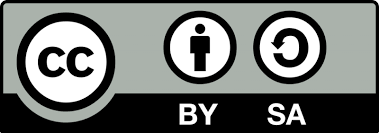Basic education. Beyond compulsory and free education
DOI:
https://doi.org/10.23824/ase.v0i38.775Downloads
Abstract
The modification of the LOE by the LOMLOE brings with it important changes in the conception and application of the curriculum in basic education, as the emergence of the Student Exit Profile at the end of basic education and the Universal Design for Learning demand practices in line with the performance of competences in a highly comprehensive and inclusive context.
For this reason, this article aims to provide an exposition, focused on basic education, to analyse how this basic right transitions from its compulsory and free provision to the generation of conditions that guarantee continuity, coordination and cohesion between the two stages of basic education.
Once universalisation has been achieved, it is then of interest to examine what students learn and how they are assessed, as well as the treatment of possible barriers that may impede learning.
References
Education Scotland (2020). Interdisciplinary Learning: ambitious learning for an increasingly complex world. Recuperado de https://education.gov.scot/
CAST (2018). Universal Design for Learning Guidelines version 2.2. Recuperado de http://udlguidelines.cast.org
D´Oliveira, G. (coord.) (2017). Perfil dos Alunos à Saída da Escolaridade Obrigatória. Recuperado de: http://bit.ly/2JN3PrD.
Elizondo, C. (2020). Hacia la inclusión educativa en la Universidad: diseño universal para el aprendizaje y la educación de calidad. Ediciones Octaedro.
Fullan, M. (2002a). Las fuerzas del cambio (Vol. 5). Ediciones AKAL.
Fullan, M. (2002b). El significado del cambio educativo: un cuarto de siglo de aprendizaje. Profesorado, revista de currículum y formación del profesorado, 6(1).
Fullan, M. (2004). Las fuerzas del cambio: la continuación (Vol. 8). Ediciones AKAL.
Graham, C. (2019). Pillars, lintels and foundations: A conference starting paper. The Royal Society of Edinburgh. Recuperado de https://www.rse.org.uk/
Guba y Lincoln (1989). Fourth Generation Evaluation. London: Sage Publications.
MacDonald, B. (1983). La Evaluación y el Control de la Educación. En Gimeno, J. y Pérez, A. La Enseñanza, su Teoría y su Práctica. Madrid: Akal.
Ministerio de Educación y Formación Profesional (2021a). Propuesta de estructura curricular para la elaboración de las enseñanzas mínimas de la Secretaria de Estado de Educación. Recuperado de https://fe.ccoo.es/
Ministerio de Educación y Formación Profesional (2021b). Perfil de salida del alumnado al término de la educación básica. Documento base. Marco curricular de la LOMLOE de la Secretaria de Estado de Educación. Recuperado de https://www.magisnet.com/
Ministerio de Educación y Formación Profesional (2020). La reforma del currículo en el marco de la LOMLOE. Documento base. Claves para el diálogo. Recuperado en: https://educagob.educacionyfp.gob.es/
Montero Alcaide, A. (2021). Currículo y autonomía pedagógica. Enseñanzas mínimas, comunes y currículo básico. REICE. Revista Iberoamericana sobre Calidad, Eficacia y Cambio en Educación, 19 (2), 23-36. https://doi.org/10.15366/reice2021.19.2.002
Martín, H. R. (2020). ¿Cómo aprendemos?: una aproximación científica al aprendizaje y la enseñanza (Vol. 1). Graó.
Scriven, M. and Roth, J. (1978), Needs assessment: Concept and practice. New Directions for Program Evaluation, 1978: 1-11. https://doi.org/10.1002/ev.1196
Stufflebeam, D. L., y Shinkfield, A. J. (1987). Evaluación sistemática: guía teórica y práctica. Paidós.
Tyler, R. W. y de Vedia, E. M. (1973). Principios básicos del currículo, Buenos Aires, Troquel.
How to Cite
Issue
Section
Published
Keywords:
License

Attribution Share-Alike CC BY-SA
Those authors who have publications with this magazine, accept the following terms:
A) The authors will retain their copyrights, which will be simultaneously subject to the Creative Commons Attribution License that allows others to re-mix, modify and develop on your work even for commercial purposes, provided they credit you And to license their new works under the same terms.
B) The authors will retain the rights of exploitation of the intellectual property of this work, and especially the rights of reproduction, distribution, transformation in any of its modalities and public communication of said work, which will be simultaneously subject to the License Of recognition of Creative Commons that allows others to re-mix, modify and develop on your work even for commercial purposes, provided they credit you and license your new works under the same terms.
Creative Commons Attribution-ShareAlike 4.0 International Public License

